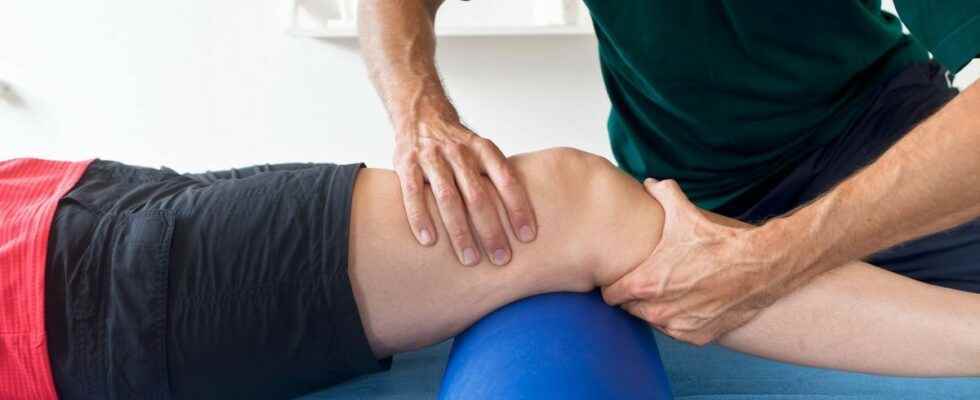Published on
Updated
Reading 3 mins.
in collaboration with
Dr Eric Plotkine (orthopedic surgeon)
A new study on the treatment of the anterior cruciate ligament (ACL) of the knee shows that repairing the ACL sometimes gives better results than reconstructing it. Explanations with Dr Éric Plotkine, orthopedic surgeon and traumatologist.
This study was presented at the annual meeting of the American Orthopedic Society of Sports Medicine, which took place from July 13 to 17, 2022, in Colorado (USA).
What are the differences between ACL repair and reconstruction?
The anterior cruciate ligament contributes to the stability of the knee. It also provides meniscal protection. Football, skiing, handball, judo and basketball are classic examples of high-risk sports for injury to this ligament.
There are 2 ways to treat a ruptured anterior cruciate ligament:
- By rebuildingwhich is surgical replacement by tissue grafting of the anterior cruciate ligament to restore function after injury;
- by repairwhich is a minimally invasive procedure to reattach the torn ligament.
Before carrying out any procedure, whether reconstruction or repair, it is important to know that there is “Never operate a cruciate ligament rupture in an emergency, but re-examine the knee 3-4 weeks after the trauma in most cases”explains Dr Éric Plotkine, orthopedic surgeon and traumatologist at the Parisian clinic Maussins Nollet.
Patients showing laxity (loosening) in the knee after 3-4 weeks should then undergo surgery, “in order to preserve the future of the knee”especially if they are active. “On the other hand, those who do not have laxity should only continue rehabilitation with a specialist”says Dr Éric Plotkine.
A greater recovery with the repair?
According to the study results, patients who undergo knee repair surgery tend to have better outcomes than those who undergo knee reconstruction surgery.
To do this, the researchers studied 75 people in two groups, according to their situation and similarities (age, gender, body mass index, knee laxity parameters, presence of meniscal lesions, level of preoperative activity , etc.). One had undergone an ACL repair, the other a reconstruction, during the same period.
Six months after the operation, the researchers assessed the strength between the knee that had been operated on and the one that had not. During the study’s final follow-up, researchers measured knee laxity, return to sport, and outcome.
Result: The ACL repair group had significantly better recovery in terms of hamstring muscle strength compared to their reconstructed counterparts. However, the researchers did not find a significant difference between the two groups regarding the return to pre-injury athletic level.
The most common and effective procedure remains reconstruction
Results that do not fully convince our expert, for whom the ACL reconstruction procedure remains the most common, if not the most effective. “Practitioners are opting less and less for repair, in particular because it only works on high tears. If this technique worked so well, healthcare professionals would choose it”, says Dr Éric Plotkine.
“The problem with repair is that it requires quick surgery, directly after the trauma, sometimes people who don’t need surgery. However, it is essential to wait 3 to 4 weeks before touching the anterior cruciate ligament”. he explains.
The anatomy of the injury therefore plays a key role in the surgical decision tree, to know whether or not to operate, repair or reconstruct. According to Dr Éric Plotkine, the main factors for operating are: the patient’s laxity (data established by the doctor), instability (the patient’s feelings), activity and degree of activity.
What about recovery time after an ACL tear?
Regardless of the operation undergone, the recovery and rehabilitation period is important. The patient must become active again very quickly.
Here are Dr Éric Plotkine’s advice for gradually resuming physical activity:
- Walks directly after the operation, without splint with 2 crutches for 10 to 15 days ;
- Car driving after 2 to 3 weeks ;
- Return to work (office) after 2 to 4 weeks ;
- Return to work (physical or manual professional activity) after 4 to 6 weeks
- Gym (squats, stationary bike, elliptical trainer), swimming (crawl, no breaststroke) after the 6th week ;
- Jogging after 3 months ;
- Pivot sports (football, skiing, tennisetc.) after 6 to 8 months.
